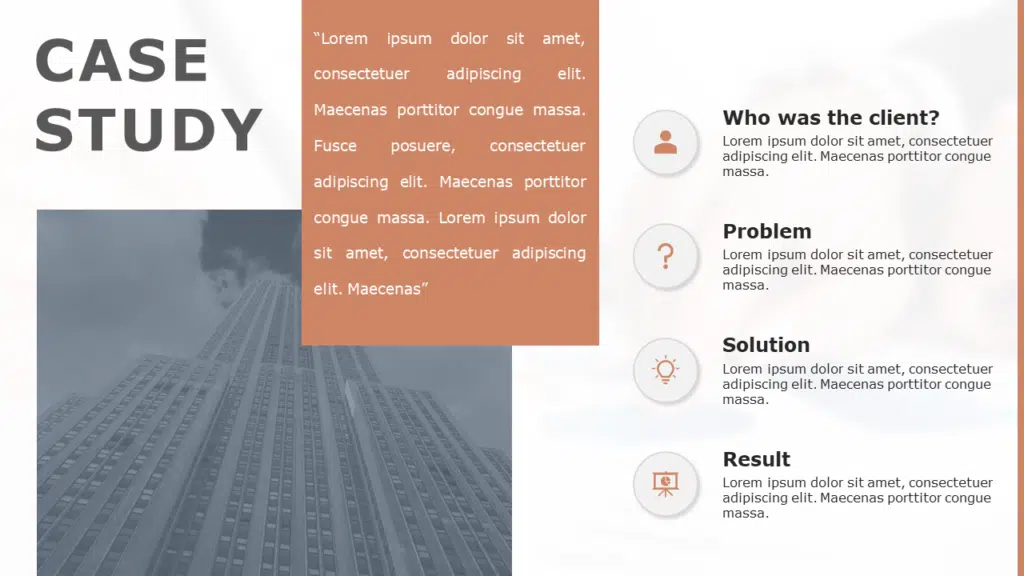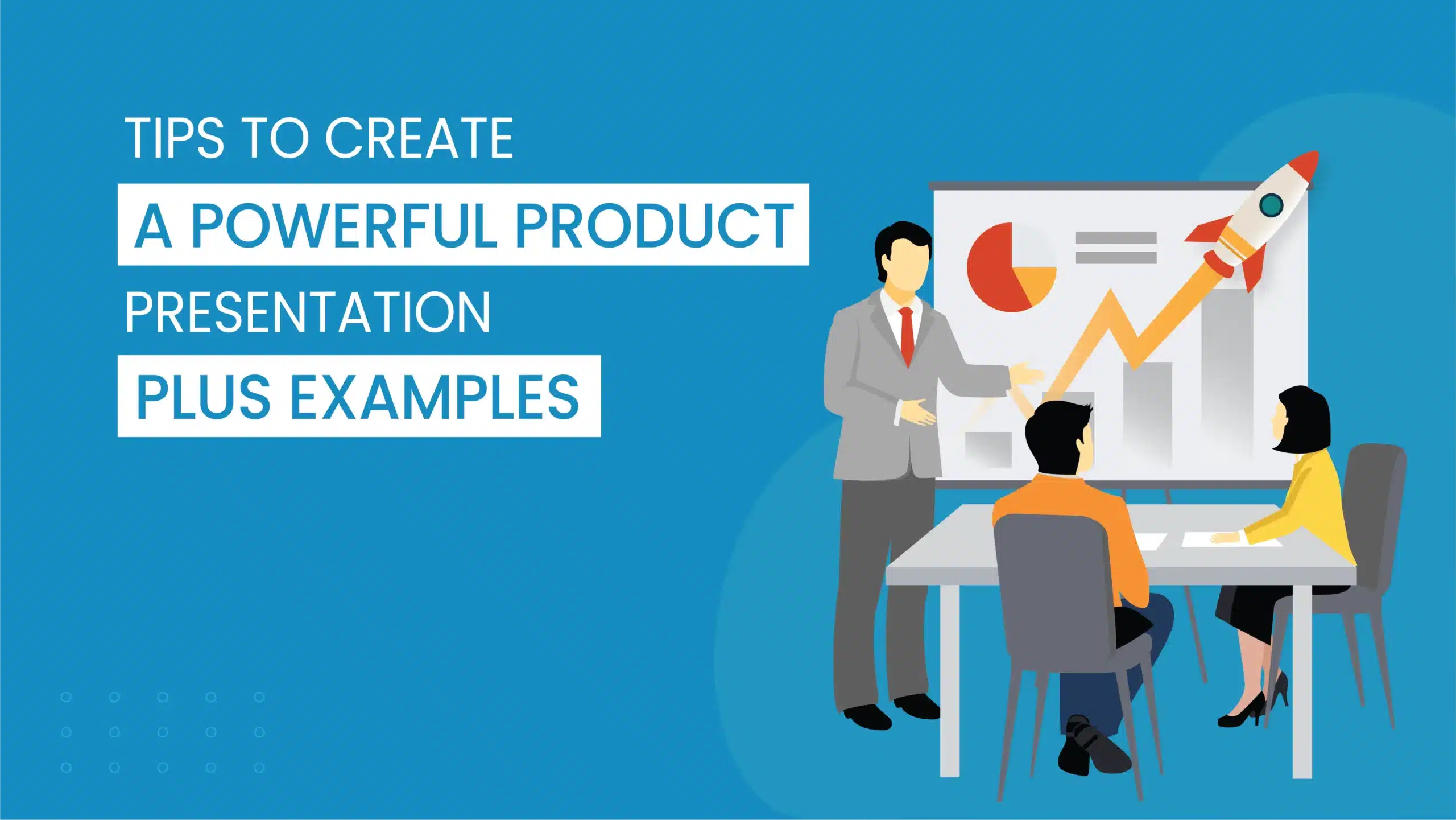Create a big Influence on your audience with these powerful case study templates
The business case study can greatly impact your ability to convince your audience when you are making a pitch. This is because case studies provide concrete and specific examples that substantiate your main claims in the presentation. If done correctly, these can be a powerful way to tell a story and convince your team, your client, your executive team, or what have you, the effectiveness of your ideas.
Understanding what case studies are and how to use them effectively will help you make the most of this presentation tool. And SlideUpLift is here to give you the rundown on why leveraging case studies as part of your next presentation is a good idea.
What Is A Case Study?
A case study analyzes a project, product, or client that your firm has worked with. It is a retroactive look at the impact, the success, the failure of initiatives, and the approaches, methods used in the process.
A key factor within case studies is that they are not merely promotional content: It can be tempting to create a case study in the form of a press release, advert, or brand promotional content. However, case studies are meant to utilize elements of storytelling to analyze and reflect on projects.
Simply put, case studies allow the client to understand what it took to achieve what kind of results and how a process or learning thereof can be utilized for future projects to ensure success. Many successful presenters make it a habit to use case studies as an integral part of their business presentations to communicate their excellence and reliability and earn credence with their audience.
Why Do We Need A Case Study?
There are various reasons why using case studies is a good idea for presenters that want to build trust with their audience. First of all, case studies can bring a project or idea to life. Rather than abstractions and vague ideas, use a case study to highlight a real example highlighting the real impact and real methods. The audience likes it and appreciates these insights in a subtle “peer-to-peer” context, meaning the audience is more likely to pay attention when the experience of similar stakeholders is shared.
Case studies, as a result, consistently rank high in terms of being a highly influential content format in general by providing credibility, examples, and proof of success to the audience.
It is important to note that legwork needs to be done to make good case studies. We have outlined the main steps you need to follow to make the perfect case study.
How To Write An Effective Case Study?
The best case studies follow the elements of storytelling, i.e., a good case study will always have a beginning, a middle, and an end – the classic narrative arc.
Divide your case study into three parts. In each part, you will talk about a specific factor relating to your client and the service you provided them.
-
Introduction + Problem
Begin by introducing your subject- it could be a client or the main beneficiary in your story. Include all the details you think would be relevant to ensure that a clear picture of the subject is being portrayed.
Following the introduction is the most important part of your “beginning.” Introduce the problem faced by the subject that led them to seek a solution. Describe key points relating to the problem, including why the subject faced that problem, how it was affecting them, and what they were looking for in terms of a solution.
-
Methods
This is where you plug in the way you approached the problem by explaining what methods you used to translate the problem into a solution.
Here’s where you present, in detail, how your subject used your solution and how your solutions helped them overcome their problem. Try including testimonials and examples of the workings of your solution. Make this section gets proper airtime in your case study in terms of time allocated to present it. Highlight what you, your team, or your organization really have to offer.
-
Results + Data
It is equally important to show hard evidence of your solutions working for your clients in a case study. Try to include as much statistical data or hard evidence of the impact of your solution.
This is also where you can elaborate on why your product/service has been so effective at dealing with your subject’s problems and how it shows a pattern of success in creating solutions or products.
A Few Examples of Case Study Templates
These examples are available in PowerPoint Themes and Google Slides Themes as well.
Source: Modern Case Study Presentation by SlideUpLift
Source: Case Study Presentation by SlideUpLift
Source: Animated Case Study PowerPoint by SlideUpLift
Source: Case Study Template by SlideUpLift
Source: Product Marketing Case Study by SlideUpLift
Source: Marketing Case Study Template by SlideUpLift
Source: Animated Case Study Template by SlideUpLift
Check out different Case Study Examples, also available in Google Slides Templates, for your reference to build effective case studies. The collection includes a wide range of case studies, including animations, complete presentations, and single slides. There is also a huge library of customer testimonials to complement your case study.
When Can You Use Case Studies?
Now that you know how to make good case studies, it is also important to know where they prove to be the most effective. Promoting your case studies as an active part of your business processes takes careful consideration of the market, company requirements and vision, and client expectations within a certain industry.
Some of the most effective places to utilize a well-made case study are –
-
Marketing Asset
The value of providing proof to a prospective buyer or client is undeniable, especially if you’re actively soliciting their business. Case studies are a great way to present your organization by providing evidence of prior work to active buyers currently in the market to compare and decide on solutions and providers for a problem they are dealing with.
Making presentations with case studies, executive summaries, and a sound strategy is the perfect trifecta of marketing assets that can swing potential clients towards your organization.
-
Blog Posts
A great way to promote a successful venture completed by your firm is to create a detailed presentation containing your successful case study and write a blog around it. Blogs generate more traffic on your personal website, especially from those that are trawling the internet for appropriate solutions. A well-written blog post can also promote the brand itself and put it on the radar of potential customers.
A good tip for converting your case studies into a blog post is by identifying the main problem solved in the case study and making it the key area of focus of the entire blog.
-
Email Marketing
Emails are a great way to reach out to clients that may still be on the fence about opting for your firm as their provider. By emailing them instances of success and a well-written case study containing proof of your work with prior clients, you can inform a potential client about your expertise and experience in the field they are currently looking in.
Emailing case studies is also a good way to follow up on any other leads one way may have with regards to a client. By providing examples of work and references to previous clients, a casual lead may very well convert into a paying client for the company.
Try our Free Template to get started
Source: Free Case Study PowerPoint by SlideUpLift



















